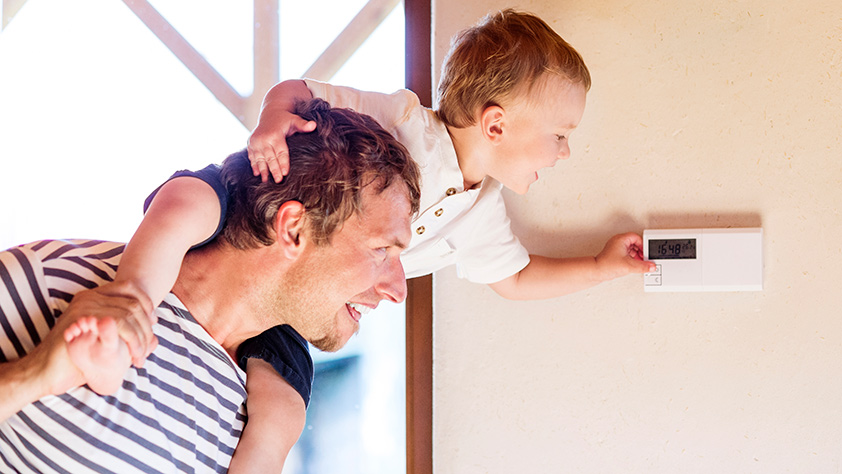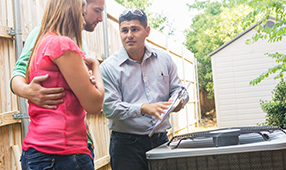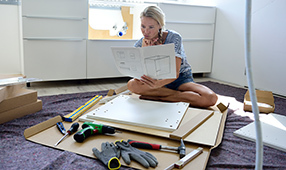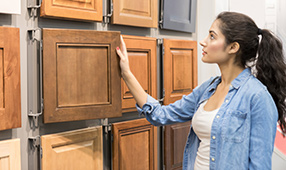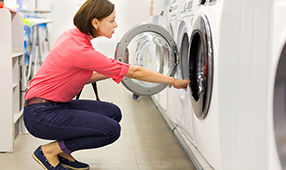As the mercury rises, you can take some proactive measures to slash your cooling bill. Whether you rent or own, these five low- and no-cost tips can help ensure you won’t experience a high-priced energy burn this summer.
1. Use a ceiling fan or other circulating fan
Running a fan can make you feel 6 or 7 degrees cooler via the wind-chill effect. A fan doesn’t cool a room, it just makes it more comfortable to be in. Just remember to turn off the fan when no one’s around to avoid wasting electricity.
If you also use an air conditioner, a ceiling fan helps disperse cooled air more efficiently and lets you raise the thermostat by as much as 4 degrees with little or no discomfort.
2. Run your AC more economically
“Setting your AC as high as is comfortably possible and using a programmable thermostat to increase temperature when you’re out or asleep could easily decrease your summer cooling bill by 10%,” says Christina Kielich, spokesperson for the U.S. Department of Energy.
Remember: The smaller the difference between indoor and outdoor temperatures throughout the summer season, the less you’ll spend. Set your AC’s thermostat to 78ºF instead of 72ºF (if you don’t mind some heat) and you could lop as much as 18% off your summer cooling costs.
Coming back into to a hot house? Turning the AC to a colder-than-normal setting won’t cool rooms any faster. “You’ll probably forget you turned it down in the first place, resulting in pointless spending,” Kielich says.
3. Maintain your cooling systems for optimal performance
It’s not enough to use an energy-efficient AC and install a programmable thermostat. If you don’t properly care for your equipment, it won’t reduce your cooling costs. Dirty AC filters block airflow and make units work harder to cool your home. Cleaning and/or replacing filters once per month will lower an AC’s energy consumption by 5% to 15%.
If you have a central cooling system, be sure that floor registers aren’t blocked with dust—or furniture. A unit’s evaporator and condenser coils (located outside) should also be clear of dirt and other debris (fallen leaves, branches, grass). And clip nearby foliage so that it always remains at least 2 feet from the condenser.
4. Avoid indoor heat buildup during the day
Whenever the outdoor temperature exceeds the temperature inside your home, try to avoid activities that generate a lot of heat, such as cooking on the stovetop and using the dishwasher or clothes dryer. Instead, Kielich suggests microwaving food or grilling it outside, washing dishes by hand and letting them air-dry, and hanging clothes on a clothesline. Or try to save these activities until after dark when temperatures have dropped.
Whenever you bathe during the heat of the day, use the bathroom exhaust fan to spot-ventilate and remove excess heat and humidity. Computers, stereos and TVs are also big heat-generators. By simply avoiding using them during hot summer days, you’ll be saving some money on electricity—and what it would cost to make your AC work overtime.
5. Close curtains, blinds and shades to block the sun’s rays
Whatever your window treatments, you’ll see significant savings if you work to prevent solar heat gain by keeping them drawn all day. “When completely closed and lowered on a sunny window, highly reflective blinds can reduce heat gain by around 45%,” says Kielich.
Try to use light-colored treatments: The lighter the hue, the more they’ll deflect the sun’s scorching rays. Hang shades as close to windowpanes as possible, as this enables them to also block outdoor heat from radiating inside.
Consider investing in insulated and/or reflective shades, which will also save you money come heating season as they’ll help keep out the cold air too.